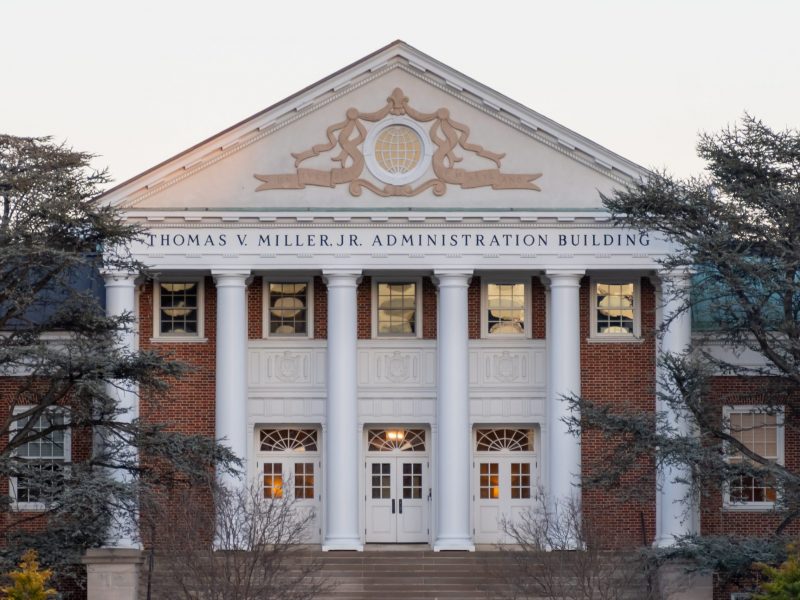
University President Wallace Loh
The state’s General Assembly increased state funding for the university by more than $30 million for the upcoming academic year, enabling university officials to move forward with plans to improve academic programs, minimize the increase in in-state undergraduate tuition and increase staff salaries.
The 7.3 percent increase for higher education comes at a time when many other state universities are facing substantial funding cuts, university President Wallace Loh wrote in an email to the student body last week.
“Overall, we are extremely happy with the budget outcomes,” student affairs Vice President Linda Clement said. “The state has been extremely generous and supportive of the university, which will help keep tuition down and benefit specific academic areas.”
Among the university’s top priorities is the growth of STEM programs. Over the next three years, Loh said the university will be able to fund the enrollment of 350 additional engineering and science majors in conjunction with hiring new faculty and adding of more lab and classroom spaces.
These spaces will also be sponsored by Facilities Management, which received funds to continue working on projects for STEM programs, said Bill Olen, Capital Projects director. Facilities Management officials plan to use $5.3 million to purchase equipment for the Physical Sciences Complex that will open this fall and $5 million to start design work on the bioengineering building, he said.
“The government has been very supportive of campus initiatives, including the increase of students in STEM programs,” he said. “We are very fortunate for another year of support, and for the means to add more teaching space for incoming students.”
An additional $3.4 million will go toward constructing the Edward St. John Learning and Teaching Center, a facility that will include classrooms designed for blended learning, Olen said. Nearly $900,000 will be used to renovate H.J. Patterson Hall, he added, and more than $6.1 million will go toward designing a new remote library facility to store University System of Maryland materials.
The funds will also encourage new innovation and entrepreneurship courses within the university and help integrate the university’s technology commercialization operations with the University of Maryland, Baltimore. Loh said the alliance would connect the campus’ engineering capabilities with UMB’s biomedical and public health expertise, resulting in a collaborative public health school and increased bioinformatics research.
“The whole goal is to have more startup companies to help the economy grow and form new jobs as the result of research,” Loh said. “We certainly do this much more effectively and produce more companies if we’re working together.”
The legislature also allocated $20 million toward the acquisition of a new Prince George’s County medical center, which Loh said would increase joint research, internships and educational opportunities for students at this university and UMB.
The state also enabled the university to increase faculty and staff funding by 2.5 percent in April 2014 — the first such raise in four years — in response to increases in cost-of-living expenses, which rose by 3 percent for the second year in a row.
“We cannot expect to attract and keep the best faculty and staff if we do not offer competitive salaries,” Loh wrote. “Compensation is related to educational quality and institutional reputation.”
Resident undergraduate tuition will be held at a 3 percent increase, putting this state at the bottom of all states in higher education tuition growth, Loh said.
Working to keep tuition and education costs low, said freshman Serena Doan, is a value shared by many given the state of the economy and the increase in debt accumulated by college graduates.
“Every penny counts, especially for out-of-state kids,” the government and politics major said. “We’ve been seeing a constant trend of rising tuition lately, no matter the school, so it’s great that this new funding could potentially prevent tuition from rising in the future.”
Although they haven’t finalized the exact funding allocations, officials expect to confirm the numbers by next week, said Rob Platky, assistant vice president and budget director.
“Looking at the general figures, I would have to say that we can already see that it’s a pretty good allocation,” he said. “Not many other areas in the state saw such increases, so that shows a pretty solid commitment.”
The increase in higher education funding not only serves the university and campus community but also benefits the state, Clement said.
“We have a symbiotic relationship,” she said. “The state benefits when we are strong, and we flourish when they help us. The university attracts brilliant students who graduate and potentially stay in state, which impacts leadership and the economy.”
newsumdbk@gmail.com


